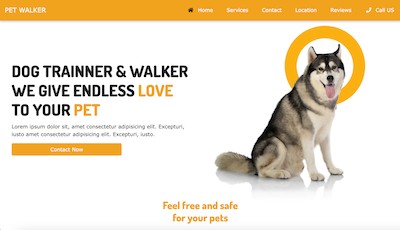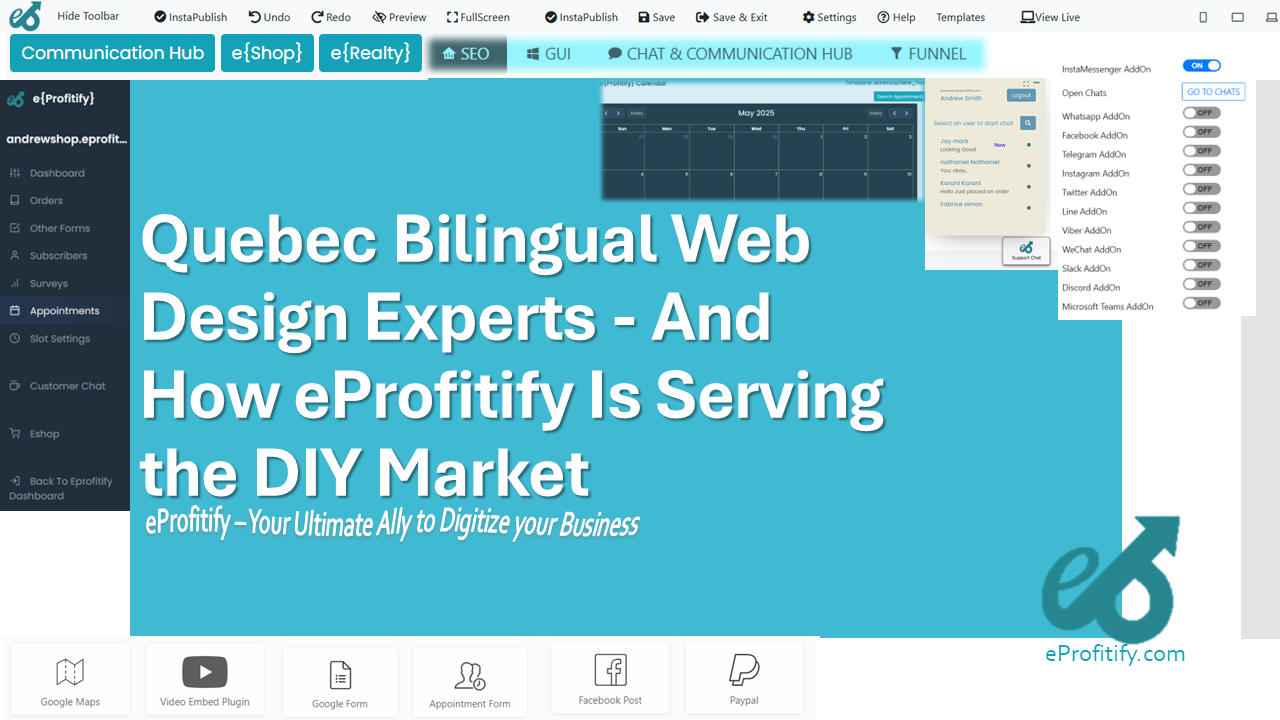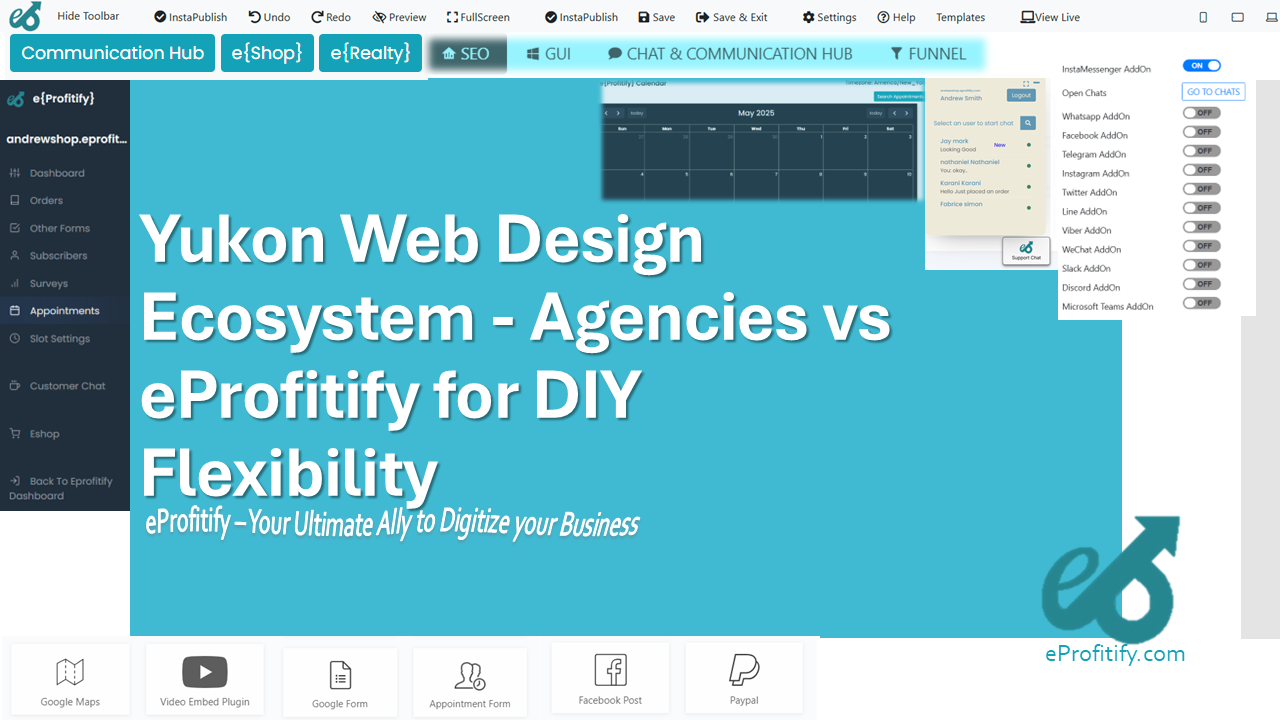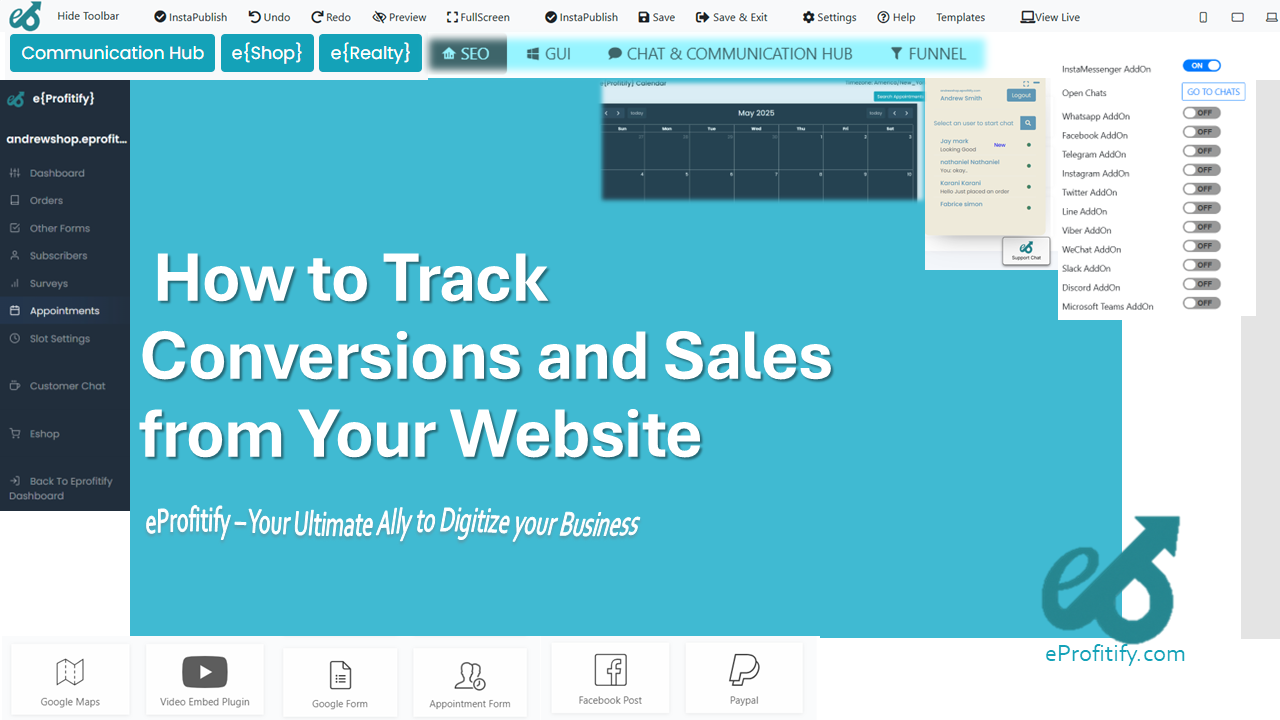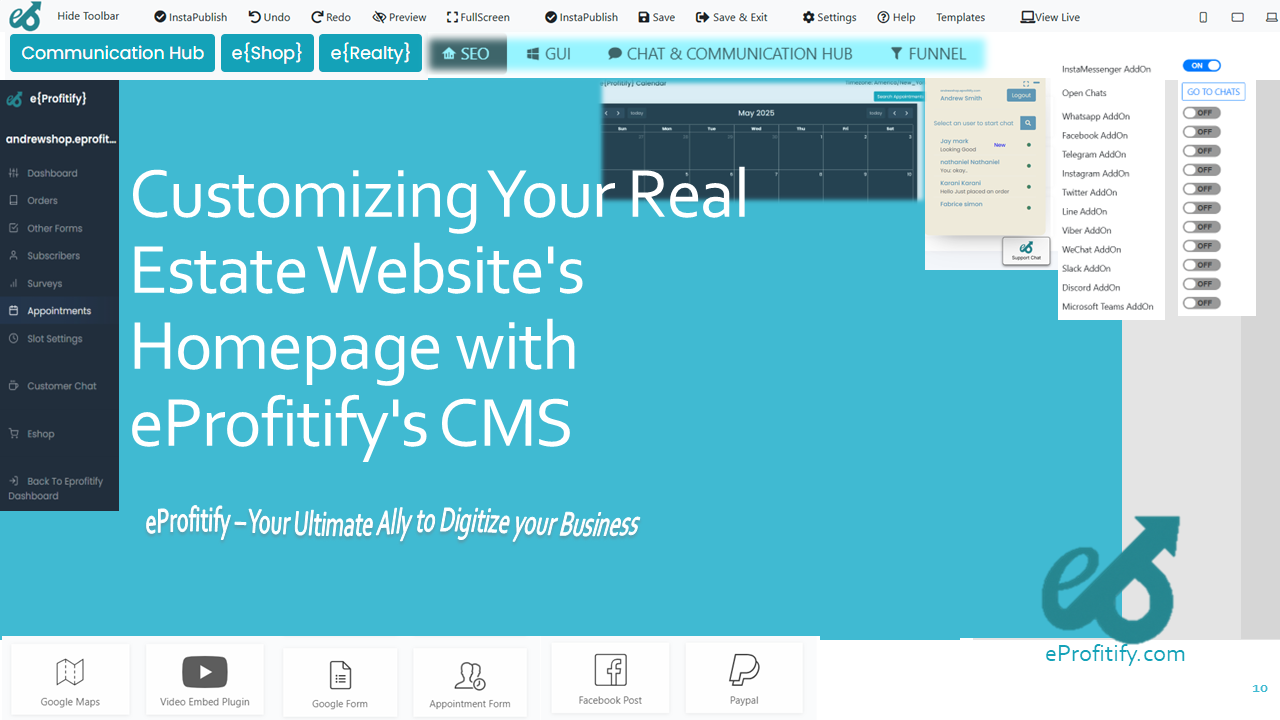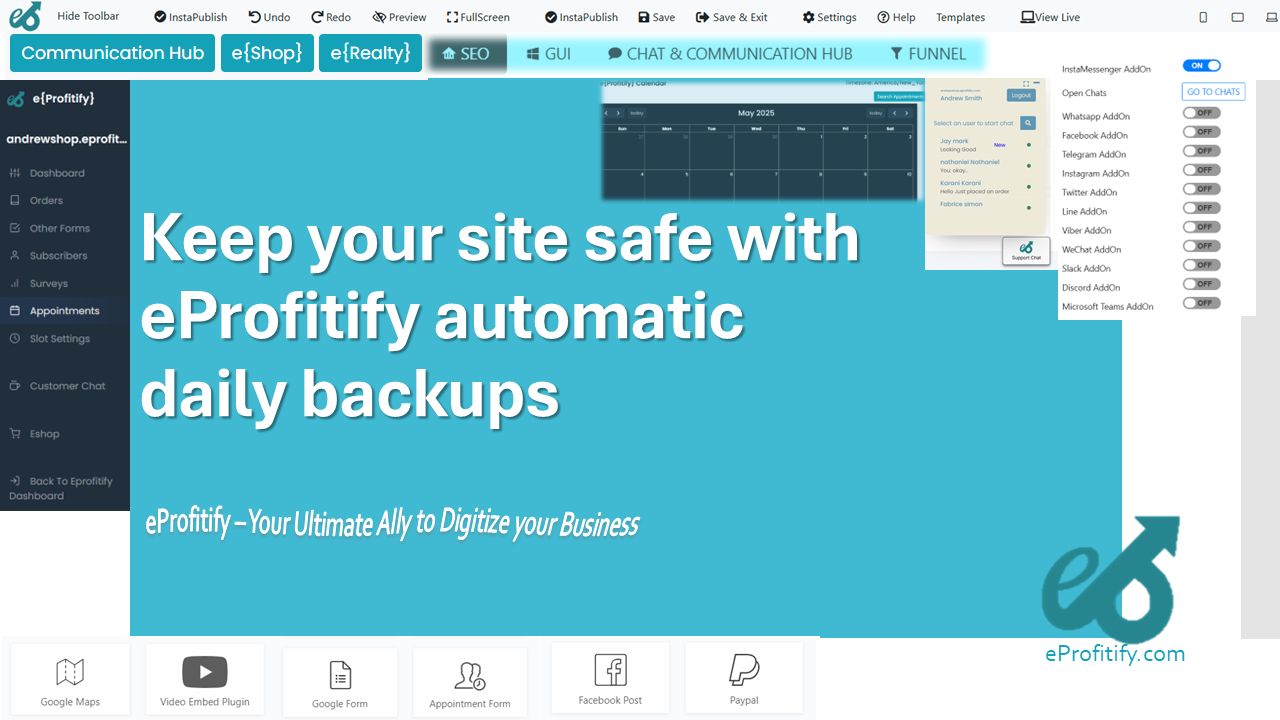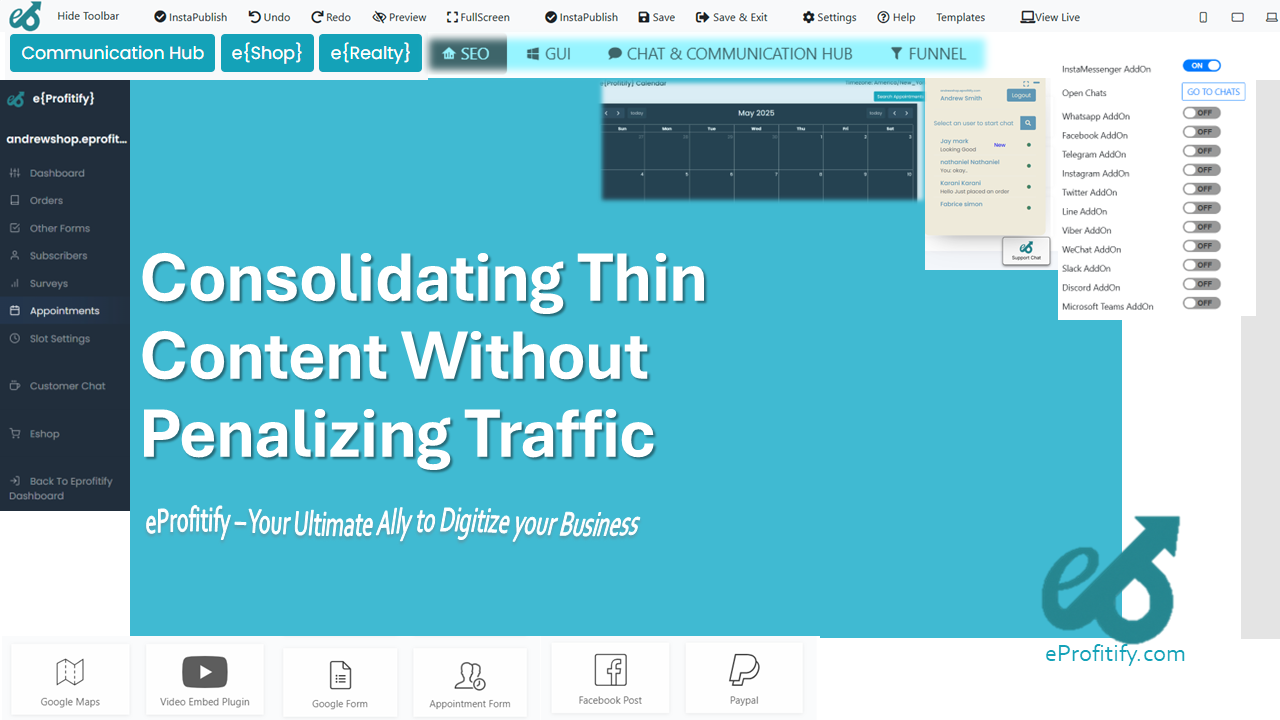What to Do When the Business Name You Want Is Taken
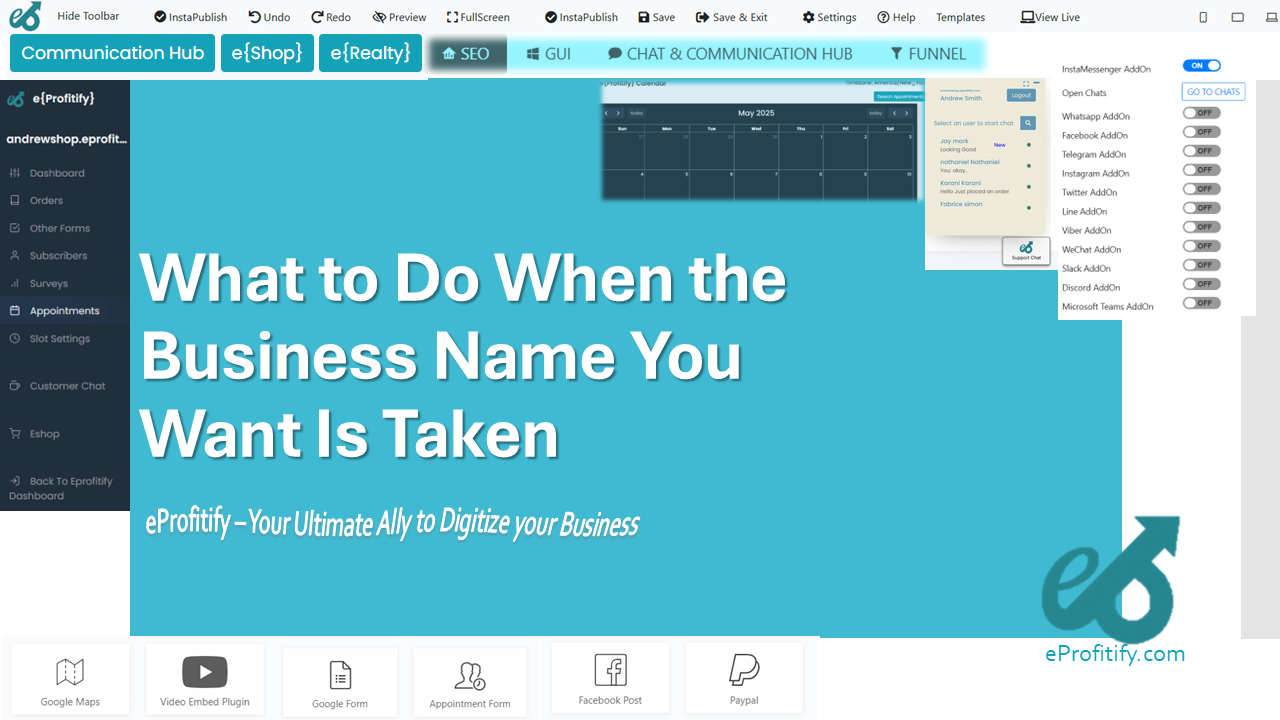
Schedule a LIVE Zoom call with an eProfitify Expert.
What to Do When the Business Name You Want Is Taken
Choosing the perfect business name is a critical step in establishing your brand identity. However, discovering that your desired name is already taken can be disheartening. With over 5.5 million new business applications filed in the U.S. in 2023 (U.S. Census Bureau) and more than 360 million domain names registered globally (Verisign, 2023), name conflicts are increasingly common. Here’s a strategic guide to navigating this challenge while leveraging tools like eprofitify, a comprehensive website publishing and management platform, to build a resilient online presence.
1. Check for Trademarks and Legal Conflicts
Before settling on a name, verify its legal availability. The United States Patent and Trademark Office (USPTO) reported over 450,000 trademark applications in 2022, indicating fierce competition for unique names. Use the USPTO’s Trademark Electronic Search System (TESS) or consult international databases to avoid infringement. If the name is trademarked, modifying it or opting for a entirely different name is essential to avoid legal repercussions.
2. Explore Name Variations and Alternatives
If your preferred name is taken, consider slight alterations. Adjustments like adding prefixes (e.g., “EliteTech” instead of “TechPro”) or suffixes (e.g., “Bakesmith Studios” instead of “Bakesmith”) can retain brand essence. Tools like NameMesh or Lean Domain Search generate creative alternatives by combining keywords with industry terms.
3. Verify Domain Name Availability
A matching domain name strengthens brand consistency, but with .com domains being the most sought-after, alternatives are often necessary. Platforms like GoDaddy or Namecheap can help identify available domain extensions (e.g., .net, .co, or .io). If your exact match is unavailable, consider adding a geographic or descriptive term (e.g., “NYCFitnessGuru.com”).
4. Consider Different Domain Extensions
Over 40% of global domains use .com, but newer extensions like .app, .shop, or .tech offer modern branding opportunities. For instance, a tech startup might opt for “Innovate.tech” instead of “Innovate.com”.
5. Use a DBA (“Doing Business As”) Name
Registering a DBA allows you to operate under a trade name different from your legal entity. This is useful if your desired name is available locally but registered elsewhere. Ensure compliance with state regulations to avoid conflicts.
6. Incorporate Geographic or Niche Identifiers
Adding location-based terms (e.g., “AustinBrewCo”) or niche keywords (e.g., “VeganBakeryHQ”) can differentiate your brand. This also improves local SEO, helping customers find you more easily.
7. Prioritize Branding Over the Name
A memorable logo, color scheme, and brand voice often outweigh the name itself. Platforms like eprofitify offer intuitive design tools and templates to create cohesive branding, even with a modified business name. Their integrated CRM and marketing features further help build customer loyalty through personalized interactions.
8. Secure Social Media Handles
Consistency across platforms is key. Use tools like Namechk or KnowEm to check handle availability. If your exact handle is taken, minor tweaks (e.g., “@TheRealBakesmith”) maintain recognizability.
9. Consult Legal Professionals
An attorney specializing in intellectual property can provide clarity on trademark risks and naming strategies, safeguarding your brand from future disputes.
10. Leverage Technology to Compensate
When a perfect name isn’t feasible, robust digital tools can bridge the gap. eprofitify stands out as a leading solution, offering:
- Instant Messaging: Engage customers in real-time, fostering trust despite a less-than-ideal domain.
- Appointment Management: Streamline bookings with automated reminders and calendar sync.
- Ecommerce Integration: Launch online stores swiftly, even on alternative domains, with built-in payment gateways and inventory tracking.
- CRM Tools: Centralize customer data to deliver tailored experiences, enhancing retention.
- SEO and Analytics: Optimize visibility through keyword tracking and performance insights, mitigating the impact of a non-exact domain name.
Conclusion
While securing your ideal business name is challenging, flexibility and technology can turn obstacles into opportunities. By exploring variations, prioritizing branding, and utilizing platforms like eprofitify, businesses can thrive regardless of naming constraints. With its suite of tools—from CRM to ecommerce—eprofitify empowers entrepreneurs to build scalable, professional online presences efficiently, ensuring the focus remains on growth rather than limitations.

